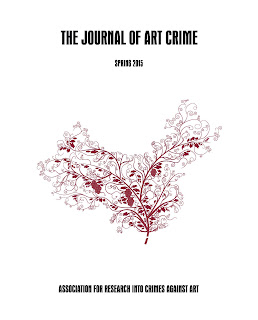Wednesday, July 29, 2015 -  Amelia,Carabinieri,security,Uganda
Amelia,Carabinieri,security,Uganda
 No comments
No comments
 Amelia,Carabinieri,security,Uganda
Amelia,Carabinieri,security,Uganda
 No comments
No comments
A Carabinieri officer, Amelia residents, and Uganda: ICAD works to provide maternity services to a mission in northern Uganda; Volunteers can attend a course on security
by Catherine Schofield Sezgin,
ARCA Blog Editor
Luca Del Moro, an officer with the carabinieri office in Amelia, was stationed in Uganda from 2004 to 2008 — however, the hard work of Italian Catholic missionaries in this land-locked African country left an impression on him. Del More is CEO and Founder of ICAD Onlus - International Cooperation and Development Association.
This September, Del Moro will be leading the third course on security and volunteering. The course on security in countries plagued by terrorism will be held for teachers from the United Nations, universities, armies, police, and missionaries. The subjects include radio communication; personal security (working with interpreters; negotiation and communication; security risk assessment; survival skills; weapons awareness; basic first aid; basic self defence; four-wheel drive vehicles (driving, maintenance and map reading); travel, convoy and vehicle security; and Italian Embassy and crisis unit; background, history and cultural awareness; stress management; and making photo reports and interviews.
In July, Ambassador Grace Akello, Head of the Diplomatic Mission of Uganda to Rome, wrote a letter to ICAD expressing her gratitude for the organization’s participation in a promotional event for Uganda’s role at Milan EXPO held on April 27 in Rome.
My colleague Ambassadors who came to the promotional events, appreciated how your organization is helping to building practical capacities in all the areas that you are working in. This means that if ever you were to decide to move out, the people left behind would continue as normal and would not be left bereft of knowledge. Secondly, my colleagues appreciated your statement that you did not go there to change people. They saw this as expressing the right to people to manage their own lives, with your technical input, that also passes on the soft and hard technology. This way people learn from you and make their own choices on how they want to utilize this knowledge in their own communities. This is what partnership is made of. Allow me to take this opportunity to assure you of my highest esteem.
You can find out more information about ICAD through Facebook, searching under Luca Del Moro (http://www.facebook.com/luca.delmoro.33/), or ICAD Onlus (http://www.facebook.com/ICAD.org/).
 |
| Giulia Spernanzoni |
Another Amelia resident, Giulia Spernanzoni, a university student studying security, traveled with ICAD Onlus to the northern part of Uganda (Karamoja) in February to follow different project and inspect the clinic which will be supplied by “tools and medicines for the benefit of the IK tribe gatherers and hunters” (ICAD).
Ms. Spernanzoni is also a member of the ICAD board. She attended the 2nd Course for Humanitarian Operators, completing both phases in Italy and in Uganda.
ICAD has focused is efforts to help new mothers and their children at a maternity center in northern Uganda. A more modern facility opened in April 2014, but ICAD is working to raise funds for other structures such as the kitchen, the toilettes, and sleeping areas.
One of the founding members and board members in charge of ICAD, Msgr. Sandro Bigi, passed away in the middle of June, his funeral at the Duomo in Amelia closed down the town as everyone turned out to remember “his big heart and his dedication in helping his neighbors” (ICAD).
In June at the Parish of Saint Maria Maddalena of Torre Angela in Rome, ICAD held a charity dinner to raise funds needed to building a small house for the pregnant women living near the Morulem Maternity Centre (Uganda).
Next September, during the last two weekends (19-20 and 26-27) there will be the 3rd Intensive Course for Humanitarian Operators - Safe & Secure approaches in Field Environments. The cost is 250 euros, included the application and accommodation. The location is the gorgeous “La Tenuta dei Ciclamini” (www.iciclamini.it/) in Avigliano Umbro, owned by the famous Mogol. For more information write at info@icad-italy.org.


















